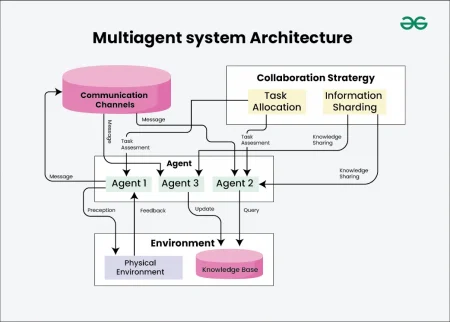As we concretise plans to build a colony on the Moon, real-time communication with that space real estate still eludes us, writes Satyen K. Bordoloi. He finds setting up data centres on the Moon is the first step toward becoming a spacefaring ‘civilization’.
In sci-fi, communication between planets was instantaneous even before it was so on Earth. Now that voice and video messaging is fast on Earth, our belief in space communications has shot-up. The truth is that transmission through the vast expanse of space is the final frontier before we become a spacefaring civilization. Voyager 1, travelling away from Earth for four and a half decades yet still inside our solar system, takes over 22 hours to ping Earth, while contacting our AI robot on Mars – Perseverance Rover – takes 3 to 22 minutes depending on where Mars is.

Connecting with the Moon seems easier considering it is in sight and our transmissions to the opposite corner of the planets are quick. But it isn’t so. For starters, the furthest that two places could be apart on Earth is 12,430 miles or 20,004 km. The Moon, though it looks closer than the furthest points on Earth, is 238,855 miles or 384,400 km away on average; almost 30 times the diameter of Earth. Though the line of Moon-sight is clear, not only is it further than any communication we have had to do on Earth, the communication lines to the Moon have not even been established. To put it in Earth terms: we haven’t yet set up a server on the Moon.
Moreover, high-speed communication networks have only emerged on Earth in the past 30 years, a period during which Moon missions were infrequent. Things today have changed. As we wrote earlier, the number of missions to the Moon has shot up exponentially. And there are plans to build a colony, if not colonies, there. It seems that before the end of this century, going on a holiday on the Moon would sprint out of sci-fi and into everyday fact.

But we don’t want to limit ourselves to the Moon. We want to live on Mars and go further out, first into the solar system, and later onto the galaxy. But all those plans hinge upon one small, incredibly vital necessity: communication. None of these would be possible without the ability to send information fast through space. As we wrote previously in Sify, quantum communications could provide the best possible solution. But that, at best, is at least a decade away. Hence, the tech we have right now would have to suffice when it comes to calling, at least in the neighbourhood.
A DATA CENTRE ON THE MOON:
When we imagine living in a place other than Earth, we think of building fancy habitations. Very few realize that one of the first things we will need to build wherever we are is a data centre – especially if we are to set up a base on the Moon. The term ‘civilization’ does not bring routers, switches, firewalls, servers, hard disks, and application-delivery controllers to mind. Yet, consider how many hours you spend on your mobile daily to know that a network of computing and storage systems that allow for the delivery of shared data and applications is one of the cornerstones of our lives. That is the key difference in the space missions of the last century: astronauts then didn’t need daily cat videos for sanity, the ones today might. The idea with this is also to give our space explorers as Earth-like an experience as possible, no matter how far from us they go.

THE DIFFICULTY OF COMMUNICATING WITH THE MOON:
On a Moonbase, the primary challenge is establishing communication due to its vast distance from Earth and unique environmental conditions. The delay in signal transmission to the Moon and back is up to 2.7 seconds for a round trip. This complicates communication with our crafts orbiting or on the Moon and requires advanced planning and synchronisation. Imagine a three-second delay while talking to anyone on Earth. It may irritate us, but when billions of dollars’ worth of equipment are at stake, it could be catastrophic. The Moon’s surface has extreme temperatures and high degrees of radiation that can interfere with electronic equipment and signal integrity. The lack of a stable atmosphere also means traditional communication methods used on Earth are ineffective, necessitating specialised technology and infrastructure to maintain a reliable communication link.
THE MANY NEW MOON MISSIONS:
A key goal of NASA’s Artemis program is to take humans to the Moon. The main part of the program is a Space Launch System (SLS), which is a new high-performance booster rocket. Next are reusable Orion spaceships to ferry astronauts. Post that would be the Lunar Gateway – our first extra-terrestrial space station that’ll orbit the Moon, enabling long stays for us, and who knows, even tourism. That would require the Human Landing System (HLS), a transporter to take human crew from Orion or Lunar Gateway to the surface of the Moon and back. This base on the Moon will be a station for scientific research on the surface and a departure station for manned missions to Mars.

This increase in human activity on the Moon means that the amount of data transmitted to and from Earth would shoot up exponentially. This data would be voice, video, and information packets going back and forth. The Unified S-band tracking and communication system developed by NASA for communication in the Apollo mission of the 1960s with its 2.7-second delay will no longer suffice. There’s a need for newer solutions to do that.
We already have a tiny data centre on Mars. Perseverance Rover uses it to walk on Mars, conduct experiments, store data, and phone home. We now need to build one on the Moon; one much more complex and sophisticated. Once we do, we can finally mean the famous words of the love song: “Fly me to the moon, Let me play among the stars, Let me see what spring is like, On a, Jupiter and Mars.”
NOKIA TO THE RESCUE:

After nearly being wiped out on Earth, Nokia has set its sights on the Moon. In 2020, NASA selected the company as a partner to provide critical communication technologies for future lunar missions. The idea is to build and deploy an LTE/4G network on the lunar surface. This year, the Times of India reported that Nokia has now entered into a partnership with Axiom Space to integrate 4G/LTE connectivity into next-generation spacesuits for NASA’s Artemis III lunar mission. The communication systems would be incorporated into the company’s moon vehicles to allow astronauts to transmit HD video, voice, and other data over the Moon’s surface and communicate in real-time with Earth.
Yet, that is just a first step. With communications technology improving daily on Earth, how do you ensure the Moon keeps pace? It is not like you can simply pack a server and corresponding equipment with a technician in tow to install it on the Moon the next day. Everything has to be planned years in advance. So, while Earth goes on to hit 6G tech, will 4G suffice for the Moon?
The challenges are many. But building a server farm on the Moon would be the first ‘small-step-for-man-giant-leap-for-mankind’ moment of our century. And that in itself is good enough to look forward to, even if it is just in 4G.
In case you missed:
- Kodak Moment: How Apple, Amazon, Meta, Microsoft Missed the AI Boat, Playing Catch-Up
- Why a Quantum Internet Test Under New York Threatens to Change the World
- How Old Are We: Shocking New Finding Upends History of Our Species
- When Geniuses Mess Up: AI & Mistakes of Newton, Einstein, Wozniak, Hinton
- Nuclear Power: Tech Giants’ Desperate Gamble for AI
- 9 new ways to power data centers: the unthinkable to the absurd
- Rufus & Metis Tell Tales of Amazon’s Delayed AI Entry
- Rethinking AI Research: Shifting Focus Towards Human-Level Intelligence
- And Then There Were None: The Case of Vanishing Mobile SD Card Slots
- Reversing Heart Disease: Next Step in Living 150 Years Achieved in Lab









